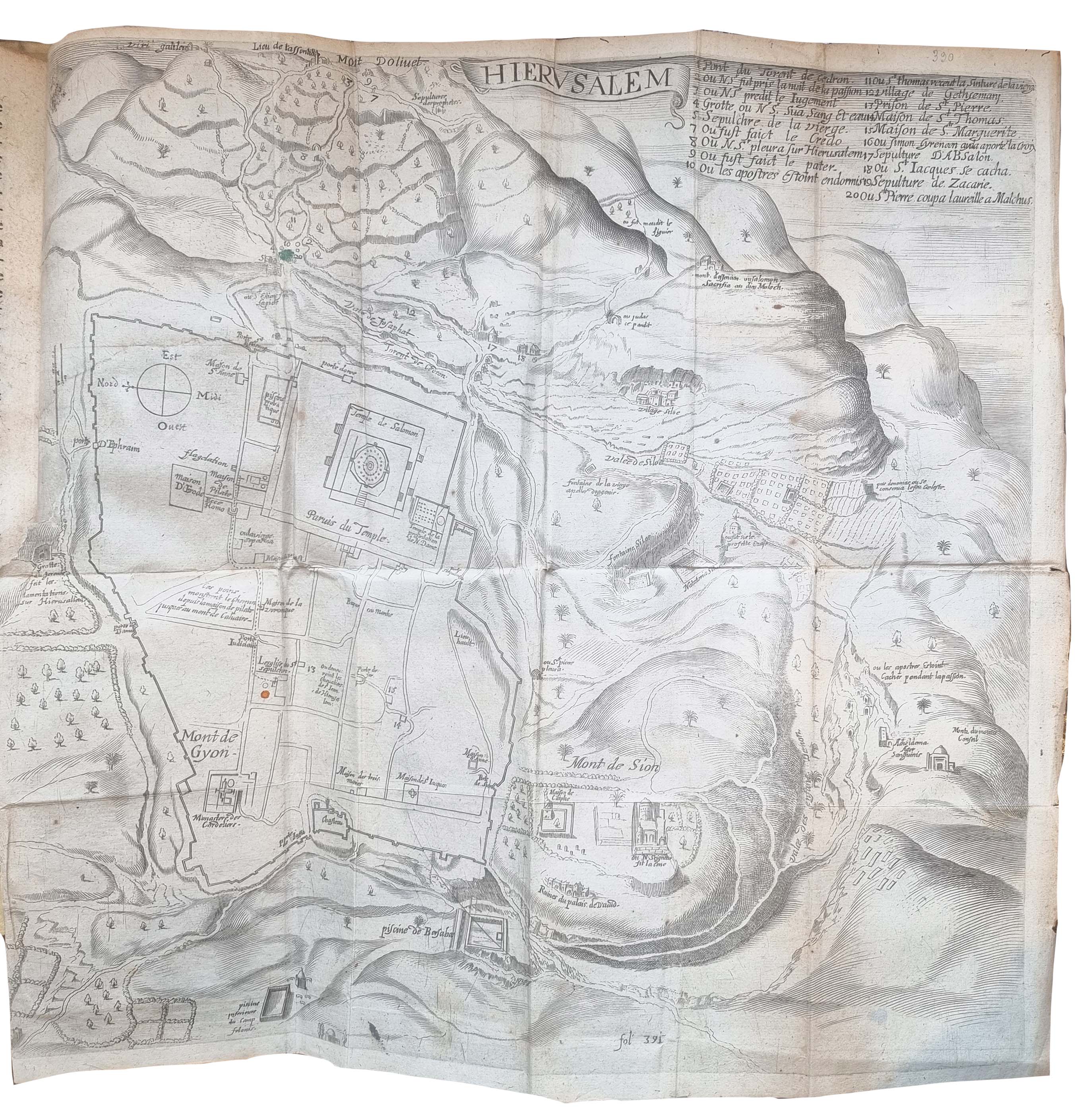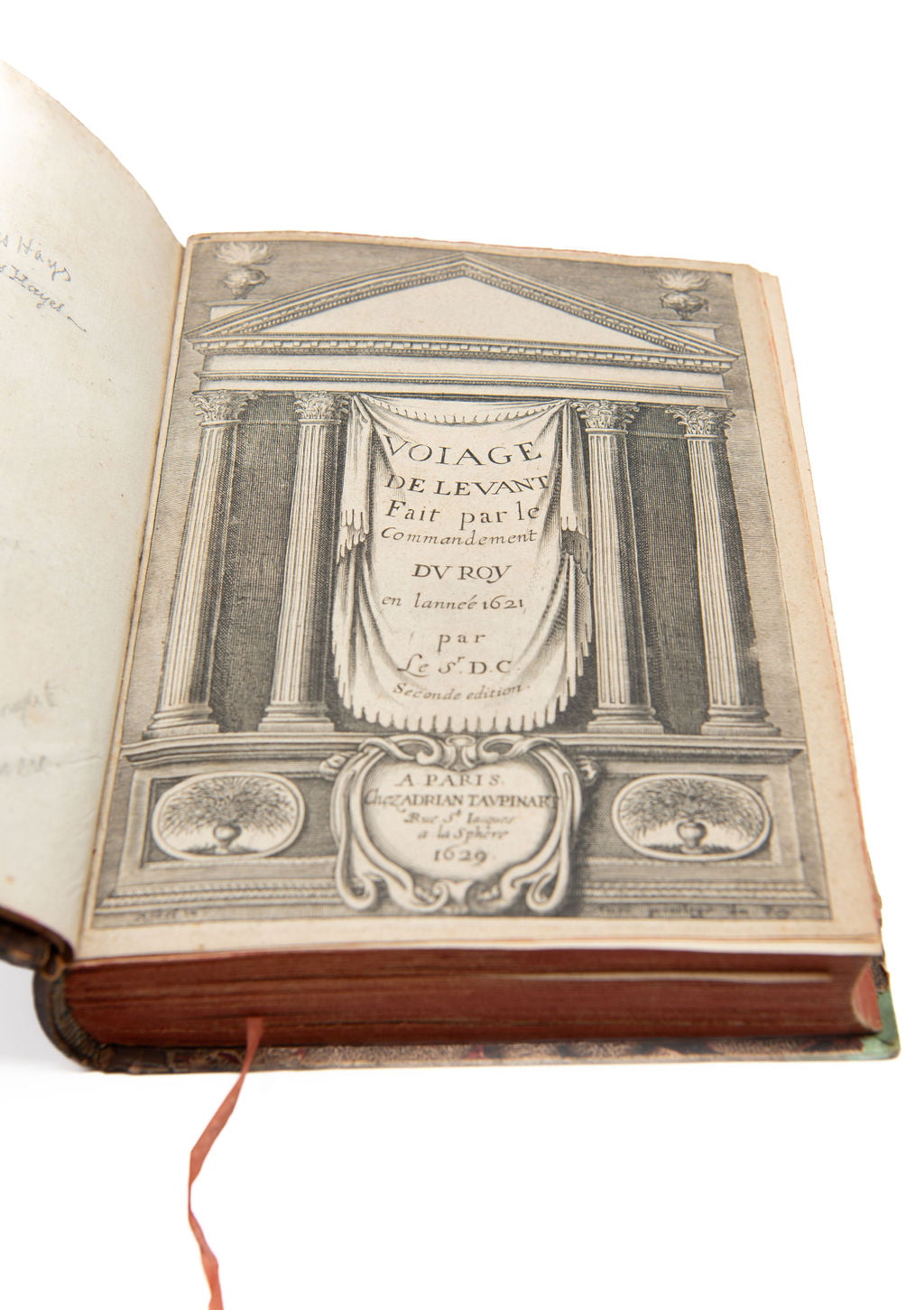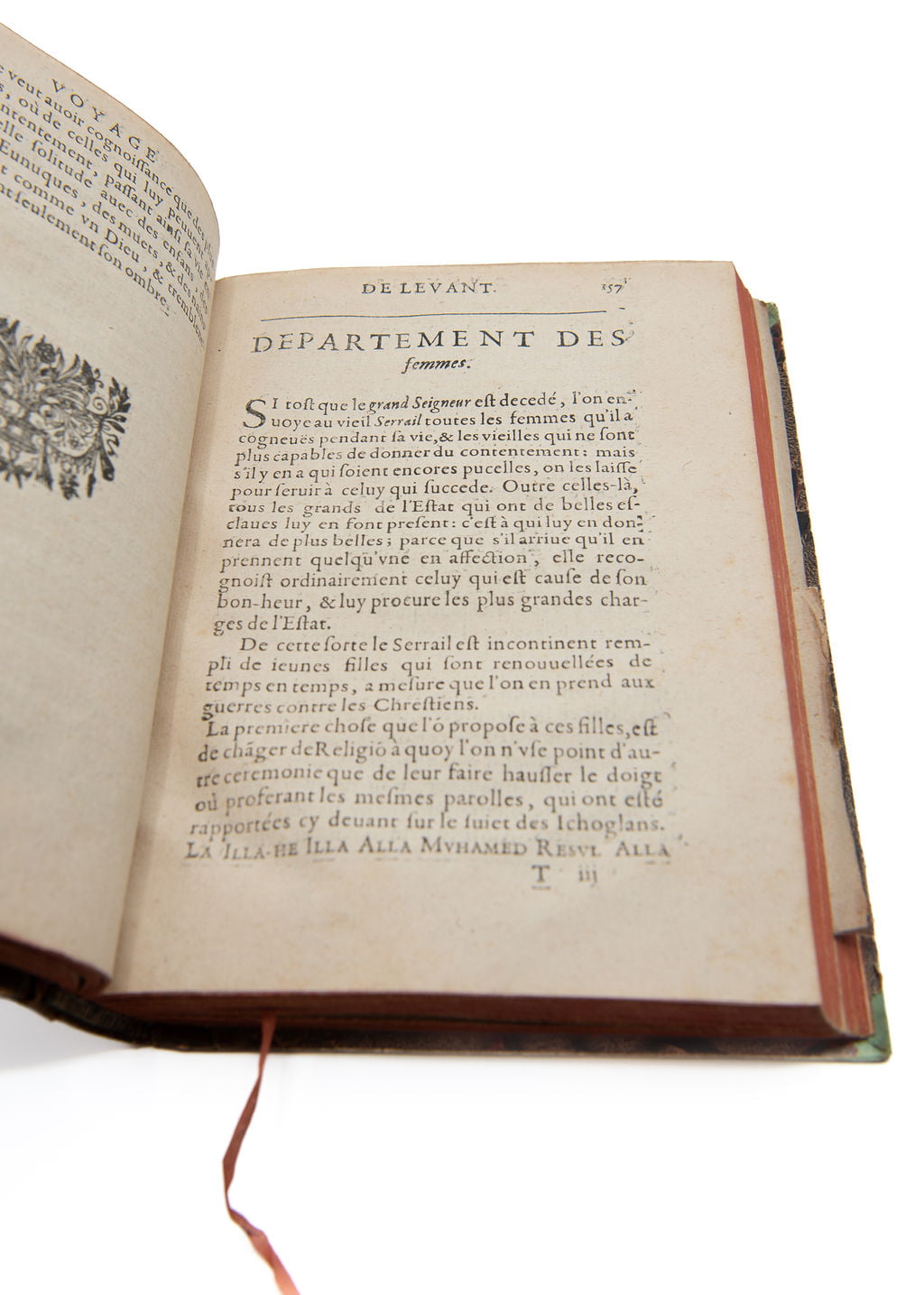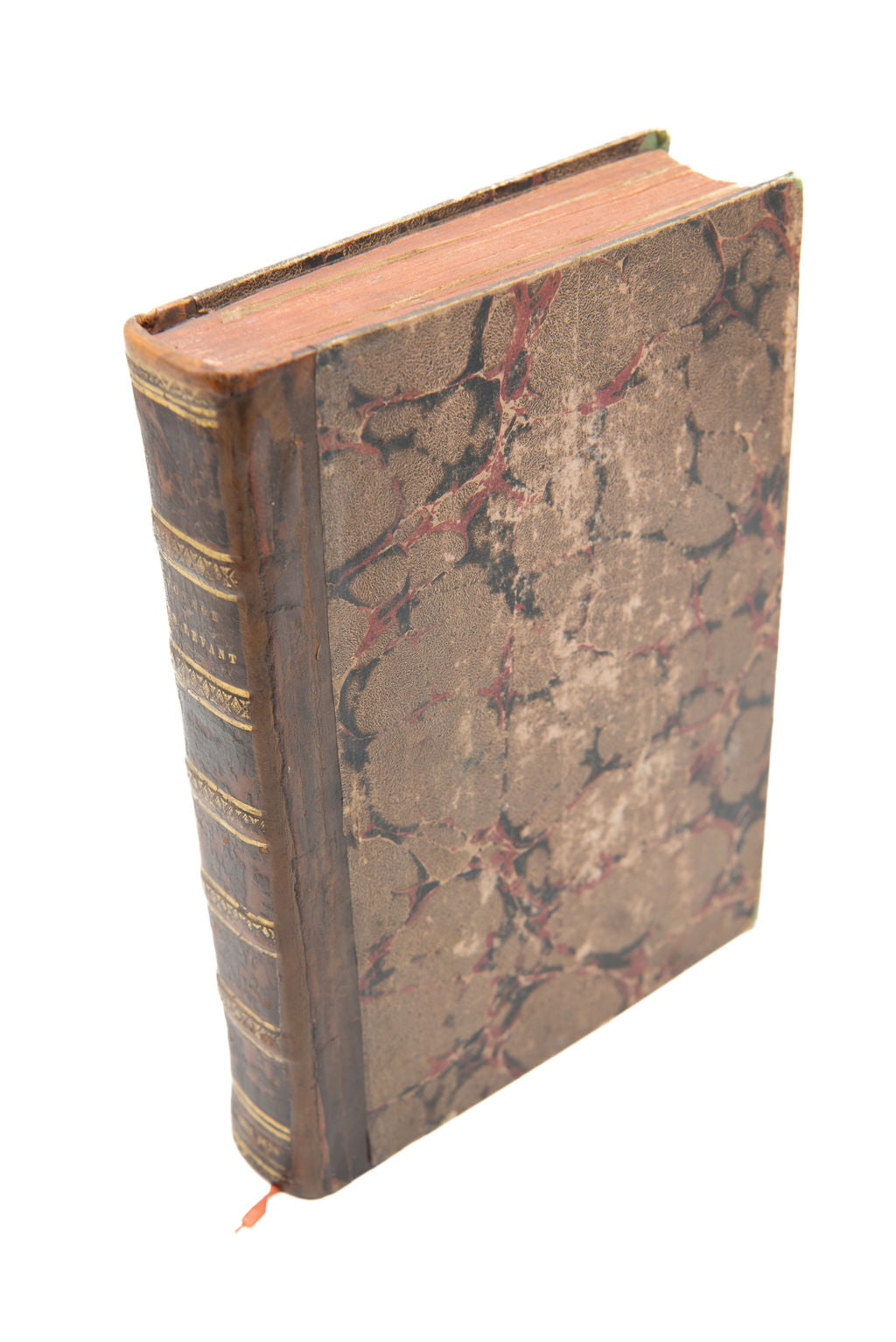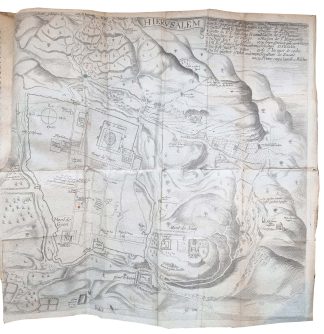DESHAYES de Courmenin, Louis.
GREECE, TURKEY AND THE BALKANS
Voiage de Levant fait par le commandement du Roy en l᾽année 1621
Paris, Adrien Taupinard, 1629£3,950.00
4to. pp. [viii] 495 [xiii]. ã4, A-3S4, without final blank 3S4. Engraved architectural title and 11 engraved plates of which 5 fld., two large woodcut Arabic letters in the text. Roman letter some Italic. Grotesque woodcut initials and headpieces, “Dr. Paul Durand” in early 20th hand on fly, bookplate of Charles Kettaneh below, marginal notes in pencil. Light age yellowing, some minor spotting in places, very light occasional water-stain, some plates trimmed within plate-mark. A very good copy in nineteenth century quarter calf over marbled boards, spine with gilt rolled raised bands, title lettered in gilt, a.e.g. a little rubbed.
Second edition of this important and early voyage to the Levant made by the French diplomat Louis Deshayes, his first mission on behalf of the French Crown. Louis Deshayes de Courmenin must have possessed exceptional gifts of intelligence and know-how for the royal government to entrust him, at the age of 21, with such an important and particularly delicate mission. The mission entrusted to him in 1621, was to obtain from the Grand-Turk the maintenance of the Catholic Churches in the Holy Land, then in the possession of the French Cordeliers, against the attempted usurpations of the Greeks and Armenians, as well as the establishment of a French consulate in Jerusalem. He was also to present votive offerings in the name of the king at the Holy Sepulchre. He was completely successful in these tasks and published the account of his travels in this work, the first edition of which appeared in 1624. “Louis Deshayes .. undertook various diplomatic missions to the East, Russia and Denmark, on behalf of Louis XIII. In 1621 he travelled to Jerusalem, in order to found a French consulate. The chronicle of the journey was written by a secretary in his entourage. The first chapter relates the journey from Paris to Constantinople, across Southeast Europe by the land route (Vienna – Belgrade – Sofia – Adrianople – Constantinople) otherwise known as “via militaris”. At the same time, the text records the other possible routes to the capital of the Ottoman Empire. Deshayes stayed in Constantinople for six weeks, and described the city and its environs. The following chapters concern the organisation of the palace, Ottoman administration and religion. As the journey continues towards the Holy Land by sea, the text describes the visits to Troy, Smyrna, Chios, Patmos, Symi, Rhodes, Megisti and Cyprus, among other places. Deshayes returned to France after travels that had lasted eleven months and nineteen days. Of special interest in this edition are the engravings of Constantinople, the Bosporus, the Hellespont, Rhodes, Jerusalem and the coast of Asia Minor.” Ioli Vingopoulou. He provided us not only with a description of his journey, but “a clear account of the structure of the Ottoman Empire, as well as the most complete description yet recorded of the Seraglio” Blackmer. His account of Cyprus includes a unique plan of Famagusta, which shows a planned extension of the walls on the west side of the town. The splendid folding map of Jerusalem is of particular importance as it is the first map to show Jerusalem from a vertical birds eye view and provides precious detail for the location of important sites. Deshayes was accused of conspiring against Cardinal Richelieu and was beheaded in 1632. A good copy of this important and finely illustrated work.
Not in USTC (first and later editions only). Tobler p. 97. Röhricht p. 242. Riant 1540. Schur 268. Carré I, 13. Graesse II, 368. Blackmer 479. Atabey 344 (1st edn.) Chahine 1301. Rouillard pp. 243-8. Weber 255.In stock


